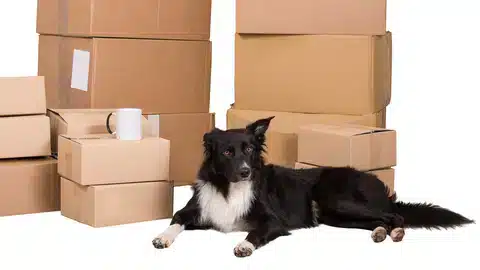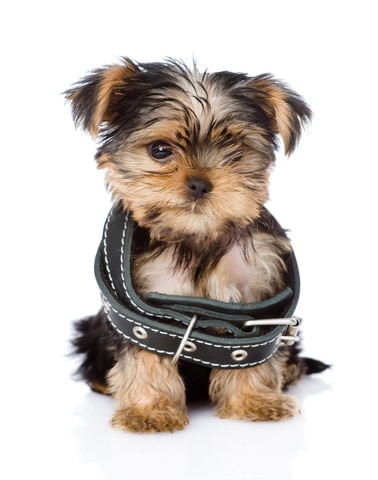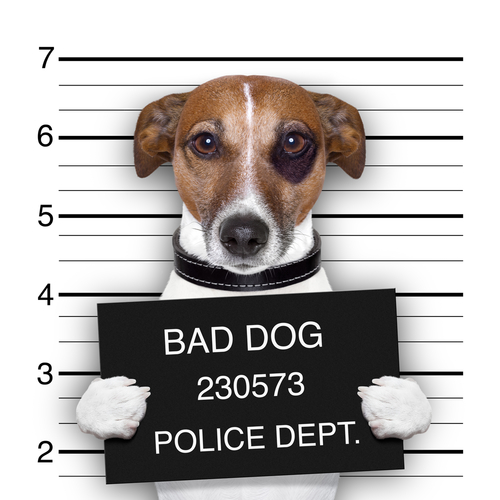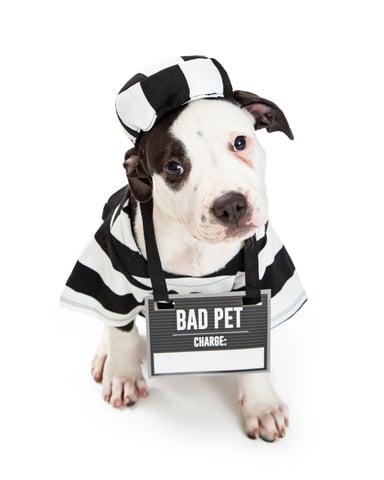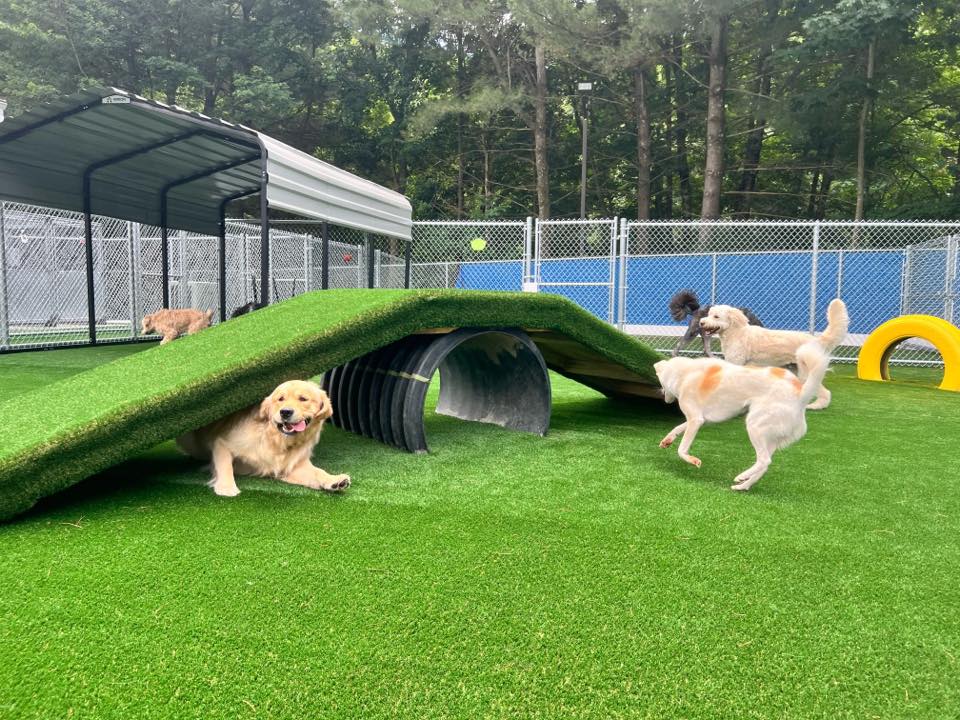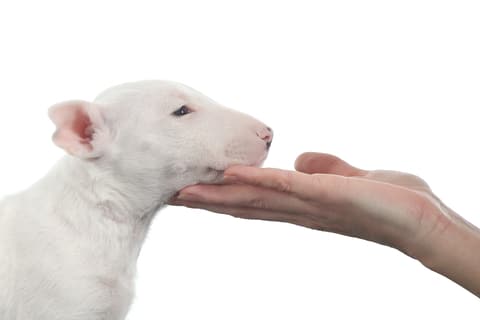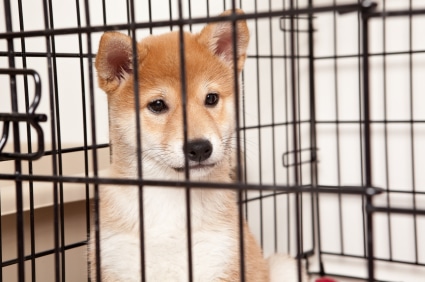
A crate, also called a cage or kennel, is a wire, wood or fiberglass enclosure big enough for your dog to lie down, stand up, and turn around – no bigger. Not too many years ago, the idea of crating a dog seemed heartless to most dog owners. Fortunately, dog owners see the evidence with their own eyes—most dogs love their crates. Dogs view the crate as a den—a safe haven, my own room! Once accustomed to it, dogs often seek out their crates.
Crate training makes housetraining quicker and easier, prevents destructive chewing, and provides a safe way for a dog to travel. Crate trained dogs often adjust more easily if they board overnight or stay at the vet’s, where they will be in a crate.
Here are the steps to train your puppy or dog to a crate:
1) Place the crate in the kitchen, bedroom, or family room, and encourage your dog to investigate it. Talk to him in a happy voice, even laughing. Rattle it a little, to show that it may make a noise. Talk happily and laugh, showing no concern.
2) Use a cue such as “kennel” or “go to bed,” entice him into the crate with a treat, praise and immediately give a treat. If he gets right out again, that’s OK
3) If he is reluctant to get in, toss a treat just inside the door, then a little further in, a little further, etc. until he gets in on his own. If necessary, physically place him in the crate once or twice, giving him a treat each time. Be sure to let him come right out again if he wants. Repeat this until he gets in on his own.
4) Tell him to “kennel”, give him a treat, and close the door. Scratch him through the bars, with praise, then let him out. Praise enthusiastically while he is in the crate rather than when he comes out.
5) “Kennel”, give him a treat, close the door and walk away for 5 seconds. Return, praise him for being quiet, open the door and let him out. Repeat, gradually increasing the time in 10 second increments.
When you have increased the time your dog is crated, you can crate him when you leave the house. Don’t make a big issue out of it. Act as you did when you left the room. No teary good-byes. Just leave
Feeding your dog in the crate can help acclimate him. Prepare his meal, say “kennel”, put the dish in, close the door and walk away. When he’s done eating, let him out (as long as he’s not barking).
During the training process, give your dog a treat each time he gets in the crate. Once he’s trained, every once in a while give him a treat.
Note: For puppies, have the crate by your bed and put your puppy in it to sleep.
A few “don’ts”
Here are some important things to keep in mind for as long as you’re crating your dog:
- Don’t put your dog in the crate in anger. A crate can be used for a “time out”, but putting him in must be unemotional. You’re simply putting him someplace safe.
- Don’t let a barking dog out of the crate. Freedom (getting out of the crate) rewards the barking. If your dog or puppy is barking in the crate, wait until he’s quiet then let him out.
